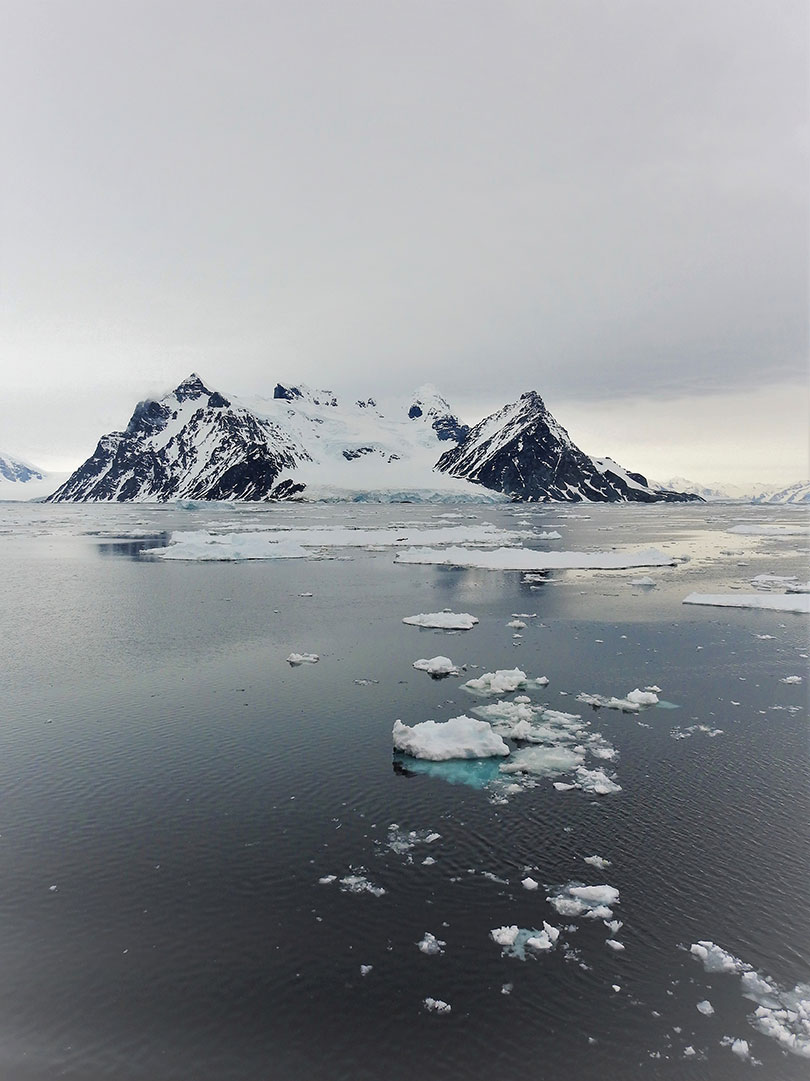- Home
- Publications
- PAGES Magazine
- Arctic Cryosphere Change and Coastal Marine Ecosystems Working Group
Arctic Cryosphere Change and Coastal Marine Ecosystems working group
Heikkilä M, Pieńkowski A, Ribeiro S & Weckström K
Past Global Changes Magazine
27(2)
70
2019
Maija Heikkilä1, A. Pieńkowskiv2, S. Ribeiro3 and K. Weckström1
The Arctic cryosphere is transforming rapidly in response to recent climate change. Accelerated melt of glaciers, ice caps and the Greenland ice sheet, increased glacial runoff, diminishing sea-ice extent and volume, coastal erosion, and permafrost thaw all have profound impacts on Arctic coastal environments (Fig. 1). The fjords and other nearshore areas form a productive zone that is vital to both Arctic biodiversity and the subsistence of local communities. Increased inputs of freshwater and sediments from land, together with diminishing sea-ice cover, will have a critical effect on future biogeochemical cycling, primary production, and key ecosystem services in the coastal zone.
 |
|
Figure 1: Cryosphere changes both on sea and on land have a profound influence on coastal marine ecosystems in the Arctic. |
Recent studies show that the impacts of land-derived freshwater on coastal circulation and contributions of dissolved and particulate matter are heavily dependent on the marine system, and have a non-linear impact on primary productivity (Hopwood et al. 2018). For example, marine-terminating glaciers induce nearshore nutrient upwelling and hence primary production, while fjords fed by land-terminating glaciers are low-production zones often characterized by a light-limiting layer of suspended matter (Meire et al. 2017). Furthermore, the coastal zone interacts dynamically with the open ocean. Land-derived meltwater can affect primary production far away from the coastal zone (Arrigo et al. 2017), while waters transported by large-scale current systems have an influence on the hydrography of some coastal systems (Sejr et al. 2017).
A major challenge facing arctic marine scientists today is the paucity of reference ecological data from which to interpret recent and future changes. Many proxy methods have been proposed based on microfossil, biogeochemical, and to some extent molecular records of sympagic, planktic, and benthic organisms to reconstruct past marine ecosystem changes. In particular, deciphering past sea-ice concentrations (de Vernal et al. 2013), sea-surface temperatures (e.g. Caissie et al. 2010), and changes in ocean circulation (Rahmstorf 2002) have attracted attention, as they are tightly linked to global paleoclimate changes. However, the multi-faceted nature of coastal ecosystems necessitates consideration of regional- and local-scale influence of cryosphere changes, and their fingerprints in biological and biogeochemical proxy records. Clearly, there is a need for closer cooperation between different proxy specialists and for critical assessment of the current analytical, numerical, and ecological knowledge.
The ACME working group was launched in July 2019, with the aim to assess and refine available marine proxies that can be used to reconstruct past cryosphere changes and their ecosystem impacts in the Arctic coastal zone. A particular focus is placed on the techniques and the quality of data, on the training of early-career scientists, and on the establishment of new community-driven protocols.
ACME is envisioned to run over two three-year phases. The main product goal of Phase 1 (2019-2022) is a database that contains a spatial network of currently available sites and proxies commonly used for reconstructing sea ice, primary production, meltwater runoff and terrestrial inputs in Arctic coastal and fjord environments. Each database entry will follow the criteria defined by the ACME community in the early stages of Phase 1. This will ensure that quality assessment of database entries will be easy for the end users. Furthermore, ACME seeks to facilitate community integration by promoting knowledge transfer and collaboration among proxy specialists, and knowledge integration of the paleo and monitoring communities. Importantly, ACME fosters critical, methodological understanding and data handling skills of the next generation of paleoceanographers and paleoenvironmental researchers.
From 17 October to 15 November 2019, ACME conducted a survey to collect community perspectives on the current state and future directions of Arctic coastal paleoceanography. The results of the survey will provide a basis for outlining priority research questions and community directions, and give an overview of spatial, methodological, and ecological knowledge gaps identified by the community.
The ACME community will meet during the first workshop to plan the database structure and proxy-specific data entry criteria at the EGU General Assembly from 3-8 May 2020 in Vienna, Austria. For more information about this working group, see the ACME website (pastglobalchanges.org/acme), sign up for the ACME mailing list (listserv.unibe.ch/mailman/listinfo/acme.pages), and follow ACME on Twitter (@AcmePages).
affiliations
1Environmental Change Research Unit (ECRU), Ecosystems and Environment Research Programme, University of Helsinki, Finland
2Norwegian Polar Institute, Tromsø, Norway
3Department of Glaciology and Climate, Geological Survey of Denmark and Greenland (GEUS), Copenhagen, Denmark
contact
Maija Heikkilä: maija.heikkila helsinki.fi
helsinki.fi
references
Arrigo KR et al. (2017) Geophys Res Lett 44: 6278-6285
Caissie BE et al. (2010) Paleoceanography 25: PA1206
de Vernal A et al. (2013) Quat Sci Rev 79: 1-8
Hopwood MJ et al. (2018) Nat Comm 9: 3256
Meire L et al. (2017) Global Change Biol 23: 5344-5357
